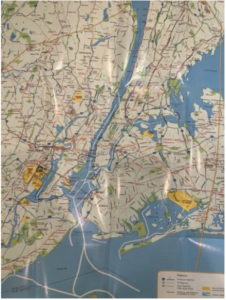Week 10
June 12, 2023
On May 30, I spoke with councilmember Alexa Avilés of District 38 primarily about Red Hook, and our conversation surely helped solidify the outcome of my project. We began by talking about the Red Hook Container Terminal situation I referenced in Week 9; while Avilés was unfamiliar with the project I was talking about, her perspective contextualized the events that led to the current situation with Red Hook and the terminal.


The Red Hook Marine Terminal and Red Hook Container Terminal have long been essential to marine transport, being directly located in the city. However, the Port of New York and New Jersey has continually received much more attention and funding from the Port Authority of New York and New Jersey (PANYNJ). Consequently, the state of Red Hook Terminals facilities has been declining in condition and use, prompting some to call for redevelopment of the space. While Avilés finds it necessary that the current use of this space continue, she stressed the importance of increasing the attention it receives from the Port Authority, as currently only 2 of the 4 cranes are working.
My discussion with Avilés gave me lots of insight into how Red Hook developed into the neighborhood it is today. Regulations in mixed-use industrial and residential areas such as Red Hook make it easy for developers to prop up both housing and factories; this is why affordable housing largely exists in clusters instead of being dispersed throughout the city. However, as mentioned in my blog post about the Truck Route Network, large-scale zoning laws that haven’t been updated in a while do not account for the largely different world we live in, especially with the advent of ecommerce. Through my project, I have learned that much of zoning in the city occurs on an individual site-by-site basis, admittedly less efficient than more comprehensive approaches to planning. Avilés considers this a failure of the city government, as they are “not connecting the dots,” though according to her the City Planning Commission would need to triple in size for comprehensive planning to occur. A key obstacle to significantly updating zoning, which Avilés says has not occurred since the 1970s, has been the large political nature of zoning legislation. The city council, mayor, and city charter commissions have often had different approaches and conflicting interests, with the political climate stifling progress.

Leave a Reply
You must be logged in to post a comment.